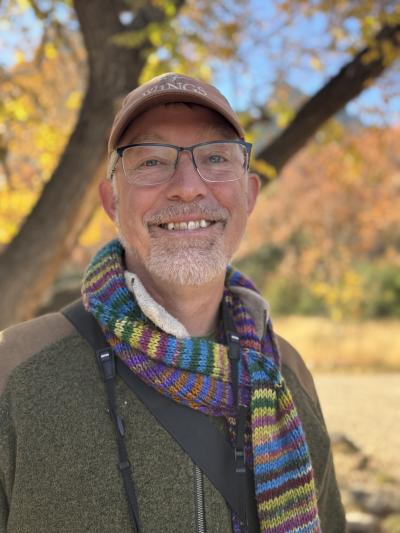Rich Hoyer recently returned from a wonderful tour in Bahia, Brazil
The Bahia, Brazil tour went beautifully this year, with great birds, fabulous scenery, amazing wildlife, and a very harmonious and diligent group of participants. Our bird list of nearly 375 species will be hard to beat in the future, and it made my job enjoyable to have all the participants so vigilant and active in spotting birds and helping to get each other on everything. When it comes to choosing the favorite birds of the tour, it’s often a little challenging to remember back nearly two weeks, so the Indigo Macaw experience on our second day near Canudos clearly made a lasting impression. With around 40 birds raucously flying around in a picturesque sandstone canyon landscape, and several pairs perched and squabbling over potential nesting nooks, it was a side trip to the north of the state well worth the effort. Farther south, the Chapada Diamantina area, with its stunning landscapes and hyper-local distributions of strange plants and animals, gave up a few of its specialties, such as Sincora Antwren and Collared Crescentchest, and we lucked out with three species of tinamous seen, such as two Spotted Nothuras in the stunted shrubland south of Mucugê. The pair of Burrowing Owls at the Byzantine Cemetery right by town were also a big hit. Farther south yet, the area near Boa Nova offered an amazing contrast in the rapid transition of ecoregions from the dry Caatinga to the wet Atlantic rain forest, and here we enjoyed Swallow-tailed Hummingbird and Pygmy Nightjar in the former and Spot-breasted Antvireo and Striated Softtail in the latter – in birding sites only 25 minutes from each other. The moths, spiders, and plants at Serra Bonita reserve were spectacular, and the bird soundscape here was fabulous. We heard the amazing descending whistle songs of Sharpbill almost everywhere, so it wasn’t a surprise that we had great views of several; a big surprise though was getting great views of an Ash-throated Crake that inhabited the overgrown pasture of the farm located in the middle of the otherwise forested reserve. Our drives were often long between hotels, but we broke them up with quick stops at wet areas, a result of what had apparently been a late and abundant previous rainy season. By far the most exciting highlight at one of them was a stray Pinnated Bittern, far from its southern Brazil breeding distribution. We ended the tour at the tropical coastal resort town of Porto Seguro, sort of the Miami of Brazil, and the large, protected track of lowland forest of Estação Veracel added several nice endemics to the list. The main highlight here though was a pair of Mottled Owls (a likely split from Central American birds), one of which perched low in the understory much closer that we had originally thought. I look forward to returning here in 2025 a tour that can be taken in combination with the wonderful birding in the neighboring state of Minas Gerais.

This pair of Indigo Macaws wasn’t the closest one we saw, but their perch above the cliffs gives a glimpse of the spectacular scenery they inhabit.

The plant life of Chapada Diamantina is famous among botanists, with new species being described all the time; this bizarre, highly localized bromeliad is Sincoraea mucugensis, named after the town Mucugê where we spent two nights.

We did not see huge numbers of butterflies, as the rainy season was still a few weeks away, so it was fun to learn that this unusual looking Atlides hairstreak is an undescribed species that had never before been photographed in the wild.

One can be forgiven for not spotting a Pygmy Nightjar sitting wide out in the open before it patters across the granite rock outcropping on its tiptoes, suddenly revealing its presence.

The Green-backed Trogon is as photogenic as any member of this gorgeous family of birds.

The highly localized Bahia Tyrannulet is difficult to detect and see well, so we were lucky to have experienced two of them at Serra Bonita.

Everyone was duly impressed with the variety and quality of food on this tour, with fresh salads and regional dishes offered at typical “self-service” lunch stops everywhere. Cláudia’s in Mucugê was one of the best.
